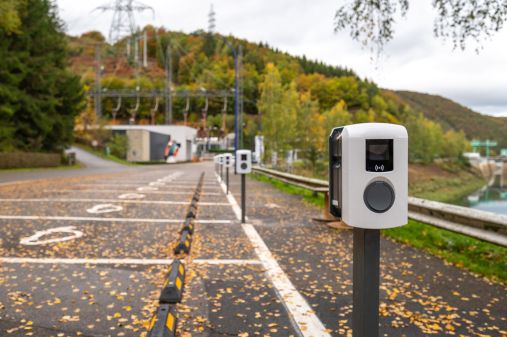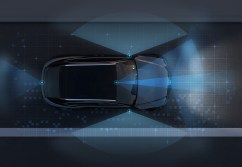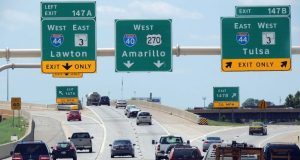Utah wins $4 million DOE grant to build electric vehicle network

Utah energy and transportation officials received a $4 million grant Wednesday for a 1,500-mile network of electric vehicle (EV) charging stations that will run through the state and into Idaho and Wyoming.
The U.S. Department of Energy awarded the grant to Utah through energy provider Rocky Mountain Power. The funding allows the state to lace electric charging stations every 100 miles along Interstates 15, 70, 80 and 84, alleviating some range anxiety from electric car owners. Ultimately, the goal for leaders in the region is to double the amount of electric vehicles on the road to more than 50,000 in the next 10 years. Reaching that goal would prevent 251 million pounds of carbon dioxide emissions from entering the air while saving consumers from purchasing nearly 25 million gallons of gasoline, the power company estimated.
The state applied for grant last spring to support its long-term goals dealing with energy, transportation and the environment, said Laura Nelson, energy adviser and executive director of the Governor’s Office of Energy Development.
“I think we all looked at [the grant] and thought this is possibly a long-shot in terms of getting it,” Nelson said. “But because of the community aspect of it and because we really have this regional effort underway — and we have a multi-state utility involved in the process — that it gave us an advantage maybe over some other applicants.”
Another factor that may have enticed the Energy Department to award the grant was Utah’s commitments to clean energy and transportation. In December, the Utah Public Service Commission approved a piece of legislation called the Sustainable Transportation and Energy Plan (STEP) that allocated $10 million, spread over five years, to be spent on incentives for renewable energy and electric vehicle stations.
“One of the different components [of STEP] was a transportation initiative … to advance electric vehicle infrastructure,” she said. “As part of that they would provide some funding for hardware deployment for some infrastructure, some education and outreach and there was also an administrative aspect of it.”
Building on the state’s past efforts to spur EV growth, the grant will offer companies incentives in the form or financial aid and discounts to install stations in their office parking lots and work areas. The grant also provides financial assistance to companies for the purchase of a total of 200 EVs and rental of about 13,800 EVs.
The state plans to place charging stations strategically at locations like universities, Nelson said, and then through partnership with the Utah Department of Transportation, they will begin gathering data.
The data gathering will assess how frequently the stations are used, how well they integrate into Utah’s roadways, and the impact that they’ll have on the state’s electric grid. For most part, Nelson said that the stations will be placed in commercial areas — like businesses where employees may benefit from them — but also where they would be accessible to a significant number of residents. As the number of charging stations increases, much of the ownership, operation and maintenance of those stations will be transferred to commercial partners.
“I think in the first year you’ll see slower deployment, with that ramping up in years two and three as a result of that information that’s gathered in the first year with those strategically placed charging stations,” Nelson said.
Strategically, the state could benefit by taking a proactive role in EV promotion. While some states leave it to the auto industry, Nelson said the choice to get involved came from a desire not only to improve energy efficiency, but also to lay the foundation for the state’s future transportation needs and to protect air quality. She said that vehicle emissions contribute roughly 50 percent of harmful pollutants during the state’s inversion season — Utah’s winter months when warm air in the atmosphere traps pollutants in the cold air on the valley floor. EVs and EV charging networks may also help with driver safety in the years ahead as autonomous vehicles pass regulatory requirements and are allowed on public roads.
“EVs and accelerated EV integration into our overall system will bring autonomous vehicles to the forefront sooner than might have occurred otherwise,” Nelson said. “So I think you’re going to see some things happen in parallel with adoption of EVs. Autonomous vehicles are going to be one of those, but the other is going to be an evolution in charging and how we develop our roadways.”
EV sales exceeded more than 153,000 in 2016, up by 32 percent from 2015, and total sales of EVs since 2010 reached more than 560,000, according to Inside EVs magazine.
Utah’s new grant and partnerships with Wyoming and Idaho complement a recent tri-state partnership with Colorado and Nevada scheduled to build charging stations across 2,000 miles of roadway by the end of the year.






